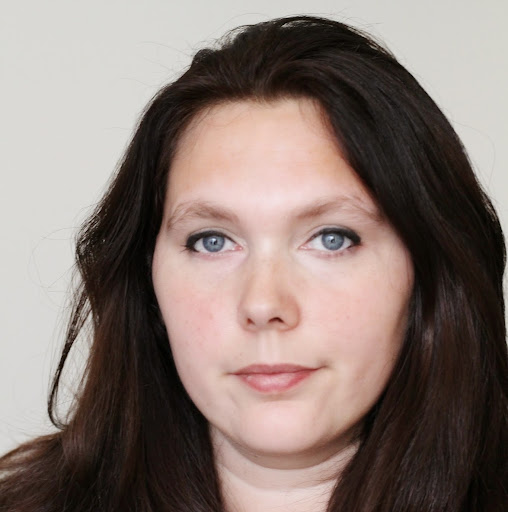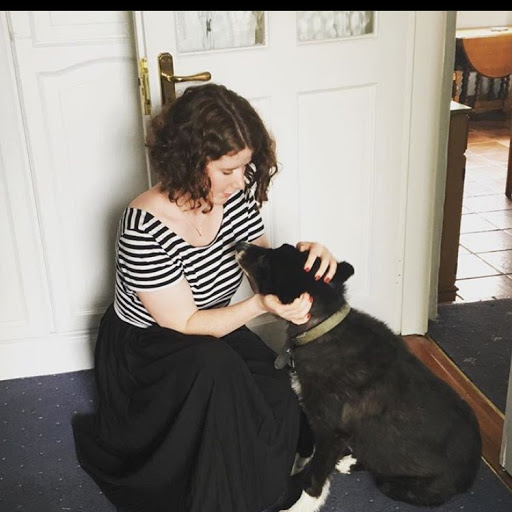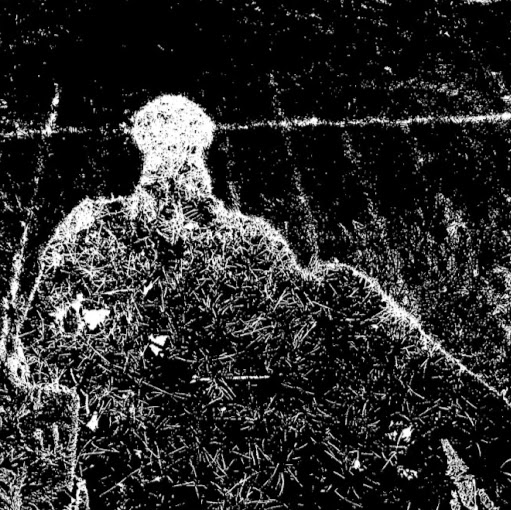Ruth W Murphy
age ~85
from Roseburg, OR
- Also known as:
-
- Ruth Russell
- Ruth M Urphy
Ruth Murphy Phones & Addresses
- Roseburg, OR
- Pleasant Hill, OR
- Fort Mitchell, KY
- Portland, OR
- New Richmond, OH
- Idaho Springs, CO
- 105 Sunset Pl, Latonia, KY 41015
Work
-
Company:Ruth R. Murphy Law Office
-
Address:
Ranks
-
Licence:Virginia - Authorized to practice law
-
Date:1985
Name / Title
Company / Classification
Phones & Addresses
Director, Secretary
VANESSAPRESS
Lawyers & Attorneys

Ruth November Murphy - Lawyer
view sourceLicenses:
Virginia - Authorized to practice law 1985

Ruth Murphy - Lawyer
view sourceOffice:
Ruth R. Murphy Law Office
ISLN:
922133411
Admitted:
2005
Law School:
Nashville School of Law, J.D., 2004
License Records
Ruth G Murphy
License #:
RS045303A - Expired
Category:
Real Estate Commission
Type:
Real Estate Salesperson-Standard
Ruth H Murphy
License #:
RS148735A - Expired
Category:
Real Estate Commission
Type:
Real Estate Salesperson-Standard
Us Patents
-
Clear Or Translucent Aqueous Fabric Softener Compositions Containing High Electrolyte Content And Optional Phase Stabilizer
view source -
US Patent:6875735, Apr 5, 2005
-
Filed:Nov 24, 1998
-
Appl. No.:09/554969
-
Inventors:Gayle Marie Frankenbach - Cincinnati OH, US
Ellen Schmidt Baker - Cincinnati OH, US
Rebecca Gayl Baker - Hamilton OH, US
Marc Johan Declercq - Bever, BE
Hugo Jean Marie Demeyere - Merchtem, BE
Ryan Matthew Heiden - Amelia OH, US
Charles Albert Hensley - Cincinnati OH, US
Brent Alan Kolb - Cincinnati OH, US
Ruth Anne Murphy - Cincinnati OH, US
Ronald Edward Pegoli - Batavia OH, US
Toan Trinh - Maineville OH, US
Errol Hoffman Wahl - Cincinnati OH, US
Michael R. Weaver - Cincinnati OH, US
Dean Larry DuVal - Kobe, JP
Masae Nogami - Suita, JP
Ronghui Wu - Gurnee IL, US -
Assignee:The Procter & Gamble Company - Cincinnati OH
-
International Classification:C11D003/04
-
US Classification:510527, 510522
-
Abstract:Clear, or translucent fabric softener compositions comprise fabric softener compound, principal solvent system, and high electrolyte levels. The high electrolyte level allows for a broader range of principal solvents to be used and/or reduces the incidence of increased viscosity when low levels of principal solvent are used. Phase stabilizers which are primarily ethoxylated hydrophobic materials can be used to reduce the amount of principal solvent that is needed and/or to stabilize the compositions in the presence of the highest levels of electrolyte. Specific phase stabilizers provide additional benefits including improved softening. Specific electrolytes provide improved results. Addition of primary solvents and/or phase stabilizers to the softener compounds can improve the viscosity/handling of the compounds and the ability to create the finished compositions.
-
Clear Or Translucent Aqueous Polyquaternary Ammonium Fabric Softener Compositions Containing Low Solvent
view source -
US Patent:6884767, Apr 26, 2005
-
Filed:Jul 5, 2000
-
Appl. No.:09/980797
-
Inventors:Gayle Marie Frankenbach - Cincinnati OH, US
Mark Robert Sivik - Fairfield OH, US
Ruth Anne Murphy - Cincinnati OH, US
Ellen Schmidt Baker - Cincinnati OH, US
Marc Johan Declercq - Strombeek-Bever, BE
Hugo Jean Marie Demeyere - Merchtem, BE
Toan Trinh - Maineville OH, US
Errol Hoffman Wahl - Cincinnati OH, US -
Assignee:The Procter & Gamble Company - Cincinnati OH
-
International Classification:C11D001/835
-
US Classification:510522, 510527
-
Abstract:Clear/translucent formulations comprise polyquaternary ammonium actives with lower, or no, solvent levels except the solvent which is normally present in the polyquaternary raw material stocks by choosing highly efficient solvents within a specific Clog P range, employing higher levels of polyquaternary ammonium, actives, and/or augmenting the bilayer with surfactants and/or polar oils. Compositions with lowered solvent levels have at or below about 5% by volume of secondary dispersed phases preferably below about 3% by volume of secondary dispersed phase, and more preferably 1% by volume of secondary dispersed phases. The most preferred compositions are essentially free of secondary dispersed phases. High-speed centrifugation easily and quickly reveals the % volume of secondary phase(s).
-
Highly Concentrated Fabric Softener Compositions And Articles Containing Such Compositions
view source -
US Patent:6958313, Oct 25, 2005
-
Filed:Dec 1, 2004
-
Appl. No.:11/001216
-
Inventors:Debra Sue Caswell - Beijing, CN
Nabil Yaqub Sakkab - Brussels, BE
Allison Jane Danneels - Brussels, BE
Karel Pierre Marie Engels - Humbeek, BE
Ruth Anne Murphy - Hamilton OH, US
Toan Trinh - Maineville OH, US
Errol Hoffman Wahl - Cincinnati OH, US
Laure Waegemans - Brussels, BE
Dominique Valeer Maria Lecluyse - Izegem, BE
Didier Gustaaf Jeanne Perot - Ghent, BE
Kurt Louis Ignoul - Hofstade, BE
Tom Danny Karl Goetry - Wortegem-Petegem, BE
Steven Louis Diersing - Cincinnati OH, US
Gayle Marie Frankenbach - Cincinnati OH, US -
Assignee:The Procter & Gamble Company - Cincinnati OH
-
International Classification:C11D017/08
-
US Classification:510296, 510522, 510527
-
Abstract:An article comprising a polyvinyl alcohol film encapsulating a fabric care composition is useful for conditioning laundry.
-
Clear Or Translucent Aqueous Fabric Softener Compositions Containing High Electrolyte And Optional Phase Stabilizer
view source -
US Patent:6995131, Feb 7, 2006
-
Filed:May 10, 1999
-
Appl. No.:09/309128
-
Inventors:Gayle Marie Frankenbach - Cincinnati OH, US
Ellen Schmidt Baker - Cincinnati OH, US
Rebecca Gayl Baker - Hamilton OH, US
Marc Johan Declercq - Strombeek-Bever, BE
Hugo Jean Marie Demeyere - Merchtem, BE
Ryan Matthew Heiden - Amelia OH, US
Charles Albert Hensley - Cincinnati OH, US
Brent Alan Kolb - Cincinnati OH, US
Ruth Anne Murphy - Cincinnati OH, US
Ronald Edward Pegoli - Batavia OH, US
Toan Trinh - Maineville OH, US
Errol Hoffman Wahl - Cincinnati OH, US
Michael R. Weaver - Cincinnati OH, US
Dean Larry DuVal - Lebanon CA, US
Masae Nogami - Suita, JP
Ronghui Wu - Gurnee IL, US -
Assignee:The Procter & Gamble Company - Cincinnati OH
-
International Classification:C11D 1/835
-
US Classification:510527, 510524, 510525
-
Abstract:Clear, or translucent fabric softener compositions comprise fabric softener compound, principal solvent system, and high electrolyte levels. The high electrolyte level allows for a broader range of principal solvents to be used and/or reduces the incidence of increased viscosity when low levels of principal solvent are used. Phase stabilizers which are primarily ethoxylated hydrophobic materials can be used to reduce the amount of principal solvent that is needed and/or to stabilize the compositions in the presence of the highest levels of electrolyte. Specific phase stabilizers provide additional benefits including improved softening. Specific electrolytes provide improved results. Addition of primary solvents and/or phase stabilizers to the softener compounds can improve the viscosity/handling of the compounds and the ability to create the finished compositions.
-
Clear Or Translucent Aqueous Polyquaternary Ammonium Fabric Softener Compositions Containing Low Solvent
view source -
US Patent:7018974, Mar 28, 2006
-
Filed:Sep 16, 2004
-
Appl. No.:10/942592
-
Inventors:Gayle Marie Frankenbach - Cincinnati OH, US
Mark Robert Sivik - Fairfield OH, US
Ruth Anne Murphy - Cincinnati OH, US
Ellen Schmidt Baker - Cincinnati OH, US
Marc Johan Declercq - Strombeek-Bever, BE
Hugo Jean Marie Demeyere - Merchtem, BE
Toan Trinh - Maineville OH, US
Errol Hoffman Wahl - Cincinnati OH, US -
Assignee:The Procter & Gamble Company - Cincinnati OH
-
International Classification:C11D 1/835
-
US Classification:510504
-
Abstract:Clear/translucent formulations comprise polyquaternary ammonium actives with lower, or no, solvent levels except the solvent which is normally present in the polyquaternary raw material stocks by choosing highly efficient principal solvents within a specific Clog P range, employing higher levels of polyquaternary ammonium actives, and/or augmenting the bilayer with surfactants and/or polar oils. Compositions with lowered solvent levels have at or below about 5% by volume of secondary dispersed phases, preferably below about 3% by volume of secondary dispersed phases, and more preferably below about 1% by volume of secondary dispersed phases. The most preferred compositions are essentially free of secondary dispersed phases. High-speed centrifugation easily and quickly reveals the % volume of secondary phase(s).
-
Clear Or Translucent Aqueous Fabric Softener Compositions Containing High Electrolyte Content And Optional Phase Stabilizer
view source -
US Patent:7037887, May 2, 2006
-
Filed:Nov 22, 2004
-
Appl. No.:10/994873
-
Inventors:Gayle Marie Frankenbach - Cincinnati OH, US
Ellen Schmidt Baker - Cincinnati OH, US
Rebecca Gayle Baker - Hamilton OH, US
Marc Johan Declercq - Strombeek-Bever, BE
Hugo Jean Marie Demeyere - Merchtem, BE
Ryan Matthew Heiden - Amelia OH, US
Charles Albert Hensley - Cincinnati OH, US
Brent Alan Kolb - Cincinnati OH, US
Ruth Anne Murphy - Cincinnati OH, US
Ronald Edward Pegoli - Batavia OH, US
Toan Trinh - Maineville OH, US
Errol Hoffman Wahl - Cincinnati OH, US
Michael Rene Weaver - Cincinnati OH, US
Dean Larry DuVal - Lebanon OH, US
Masae Nogami - Suita, JP
Ronghui Wu - Gurnee IL, US -
Assignee:The Procter & Gamble Company - Cincinnati OH
-
International Classification:C11D 3/20
-
US Classification:510527, 510522
-
Abstract:Clear, or translucent fabric softener compositions comprise fabric softener compound, principal solvent system, and high electrolyte levels. The high electrolyte level allows for a broader range of principal solvents to be used and/or reduces the incidence of increased viscosity when low levels of principal solvent are used. Phase stabilizers which are primarily ethoxylated hydrophobic materials can be used to reduce the amount of principal solvent that is needed and/or to stabilize the compositions in the presence of the highest levels of electrolyte. Specific phase stabilizers provide additional benefits including improved softening. Specific electrolytes provide improved results. Addition of primary solvents and/or phase stabilizers to the softener compounds can improve the viscosity/handling of the compounds and the ability to create the finished compositions.
-
Laundry System Having Unitized Dosing
view source -
US Patent:7056877, Jun 6, 2006
-
Filed:Aug 25, 2004
-
Appl. No.:10/925749
-
Inventors:Debra Sue Caswell - Beijing, CN
Robert Gary Welch - Mason OH, US
Mark William Ridyard - Newcastle upon Tyne, GB
Edward Sayers - North Shields, GB
David William York - Newcastle upon Tyne, GB
Daniel James Dufton - Newcastle upon Tyne, GB
Simon Howe - South Shields, GB
Johan Eshuis - Antwerp, BE
Angelina Pena-Romero - Tervuren, BE
Wundriari Hoffmann - Frimley, GB
George Endel Deckner - Cincinnati OH, US
Errol Hoffman Wahl - Cincinnati OH, US
Ruth Anne Murphy - Cincinnati OH, US
Betty Jean Hensley - Cincinnati OH, US
Toan Trinh - Maineville OH, US
Jiten Odhavji Dihora - Hamilton OH, US
Ellen Schmidt Baker - Cincinnati OH, US
Janet Sue Littig - Fairfield OH, US
Timothy James Schroeder - Mason OH, US
Steven Louis Diersing - Cincinnati OH, US
Malcolm McClaren Dodd - Gateshead, GB
Lois Sara Gallon - Cincinnati OH, US -
Assignee:The Procter & Gamble Company - Cincinnati OH
-
International Classification:C11D 3/37
-
US Classification:510439, 510466
-
Abstract:Compositions, articles and methods are provided for supplying fabric care benefits to clothing or fabrics in an automated washing machine and by manual washing. The fabric care compositions preferably have less than about 5% detergent surfactants, more preferably less than 3%, even more preferably less than 1% and are most preferably free of detergent surfactants. Similarly, the fabric care compositions preferably have less than about 5% fabric softener actives, more preferably less than 3%, even more preferably less than 1% and are most preferably free of detergent surfactants. The laundry articles can take a variety of forms in a variety of physical states all of which will rapidly dispense a unitized amount of one or more selected fabric care agents to a wash and/or rinse bath solution during the laundering process under a variety of conditions. The invention also pertains to laundry kits that contain a variety of such articles and instructions concerning their use. Likewise, methods for preparing a customized laundry solution to obtain a specific fabric care benefit selected based on the user's personal preferences and/or the fabric care needs of the fabrics being laundered are also provided.
-
Laundry System Having Unitized Dosing
view source -
US Patent:7091171, Aug 15, 2006
-
Filed:May 4, 2005
-
Appl. No.:11/121876
-
Inventors:Debra Sue Caswell - Beijing, CN
Robert Gary Welch - Mason OH, US
Mark William Ridyard - Newcastle upon Tyne, GB
Edward Sayers - North Shields, GB
David William York - Newcastle upon Tyne, GB
Daniel James Dufton - Newcastle upon Tyne, GB
Simon Howe - South Shields, GB
Johan Eshuis - Antwerp, BE
Angelina Pena-Romero - Tervuren, BE
Wundriari Hoffmann - Frimley, GB
George Endel Deckner - Cincinnati OH, US
Errol Hoffman Wahl - Cincinnati OH, US
Ruth Anne Murphy - Cincinnati OH, US
Toan Trinh - Maineville OH, US
Jiten Odhavji Dihora - Hamilton OH, US
Ellen Schmidt Baker - Cincinnati OH, US
Janet Sue Littig - Fairfield OH, US
Timothy James Schroeder - Mason OH, US
Steven Louis Diersing - Cincinnati OH, US
Malcolm McClaren Dodd - Gateshead, GB
Lois Sara Gallon - Cincinnati OH, US -
Assignee:The Procter & Gamble Company - Cincinnati OH
-
International Classification:C11D 17/00
-
US Classification:510439, 510431
-
Abstract:Compositions, articles and methods are provided for supplying fabric care benefits to clothing or fabrics in an automated washing machine and by manual washing. The fabric care compositions preferably have less than about 5% detergent surfactants, more preferably less than 3%, even more preferably less than 1% and are most preferably free of detergent surfactants. Similarly, the fabric care compositions preferably have less than about 5% fabric softener actives, more preferably less than 3%, even more preferably less than 1% and are most preferably free of detergent surfactants. The laundry articles can take a variety of forms in a variety of physical states all of which will rapidly dispense a unitized amount of one or more selected fabric care agents to a wash and/or rinse bath solution during the laundering process under a variety of conditions. The invention also pertains to laundry kits that contain a variety of such articles and instructions concerning their use. Likewise, methods for preparing a customized laundry solution to obtain a specific fabric care benefit selected based on the user's personal preferences and/or the fabric care needs of the fabrics being laundered are also provided.
Isbn (Books And Publications)

Youtube
Myspace
Flickr
Plaxo

Ruth Murphy
view sourceAustin, TXSr. Manager, Global Quote Development at Flextroni...

Ruth Murphy
view sourcewww.stampwithruth.stampinup.net

Ruth Murphy
view sourcePresident at SeArrow Realty Services

Ruth Murphy
view sourceDepartment of Human Services
Classmates

Ruth Webb (Murphy)
view sourceSchools:
Blairsville Junior High School Blairsville PA 1975-1979
Community:
Mary Caugherty, Pauline Fisher, Keith Shirley, Mary Reed, Scott Rozell

Ruth Murphy (Heinz)
view sourceSchools:
Peoria High School Peoria AZ 1956-1960
Community:
Pjay Pamela

Ruth Murphy (Rock)
view sourceSchools:
South High School Pittsburgh PA 1943-1947
Community:
Clement Colonnese

Ruth Murphy
view sourceSchools:
Henry R. Edmunds Elementary School Philadelphia PA 1960-1968, Fels Junior High School Philadelphia PA 1968-1969
Community:
E Meeker, Walter Weeks, Edward Frederick

Ruth Ann Murphy (Metz)
view sourceSchools:
Orwigsburg High School Orwigsburg PA 1969-1973
Community:
Lynn Peterson

Ruth Murphy (Koch)
view sourceSchools:
Hancock High School Hancock MN 1925-1929
Community:
Sharon Eps, Gary Schmidgall, Laurie Burke

Ruth Murphy (Crush)
view sourceSchools:
Eagle Rock High School Eagle Rock VA 1943-1945
Community:
Mary Cox, Jim Houff

Ruth Murphy-rice (Murphy)
view sourceSchools:
Jamaica Plain High School Jamaica Plain MA 1975-1979
Community:
Bob Cioffi, Arthur Athanasiou
Googleplus

Ruth Murphy
Work:
Hodder & Stoughton - Commissioning Editor, Humanities (2004)

Ruth Murphy
Work:
Retired

Ruth Murphy

Ruth Murphy

Ruth Murphy
Bragging Rights:
God daughter(tina)three grandbabies

Ruth Murphy

Ruth Murphy

Ruth Murphy

Ruth Murphy
view source
Ruth Pavlak Murphy
view source
Ruth Pansar Murphy
view source
Hannah Ruth Murphy
view source
Georgina Ruth Murphy
view source
Ruth Phillips Murphy
view source
Ruth Winter Murphy
view source
Ruth Whelan Murphy
view sourceGet Report for Ruth W Murphy from Roseburg, OR, age ~85















